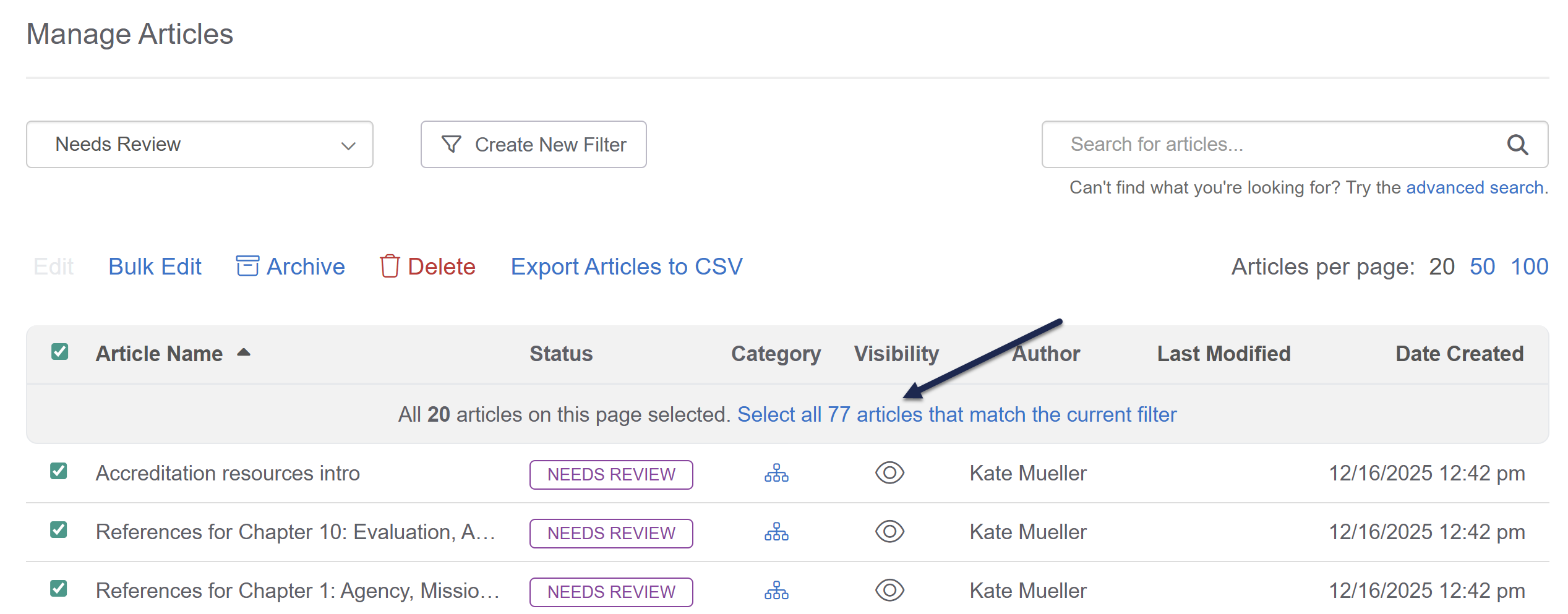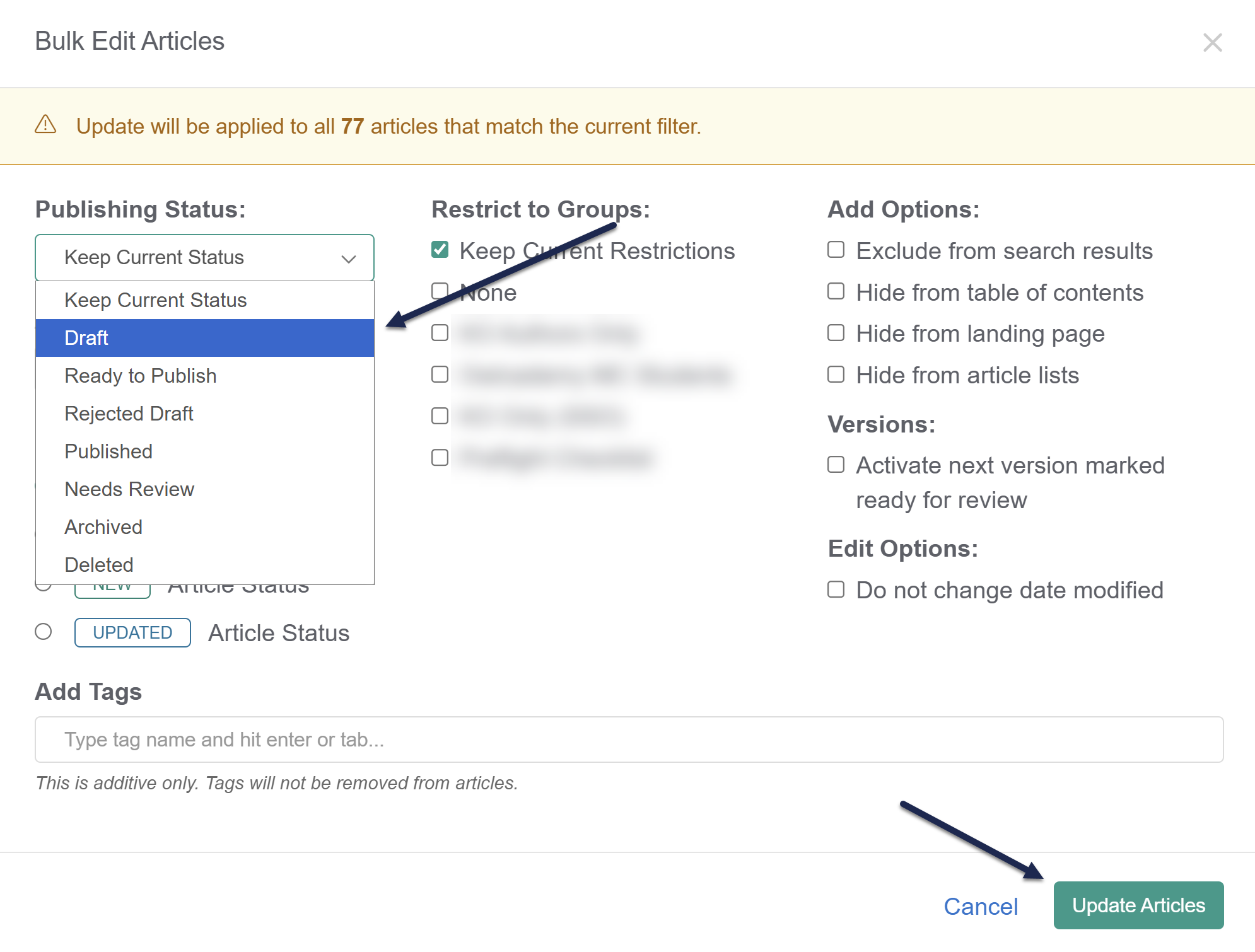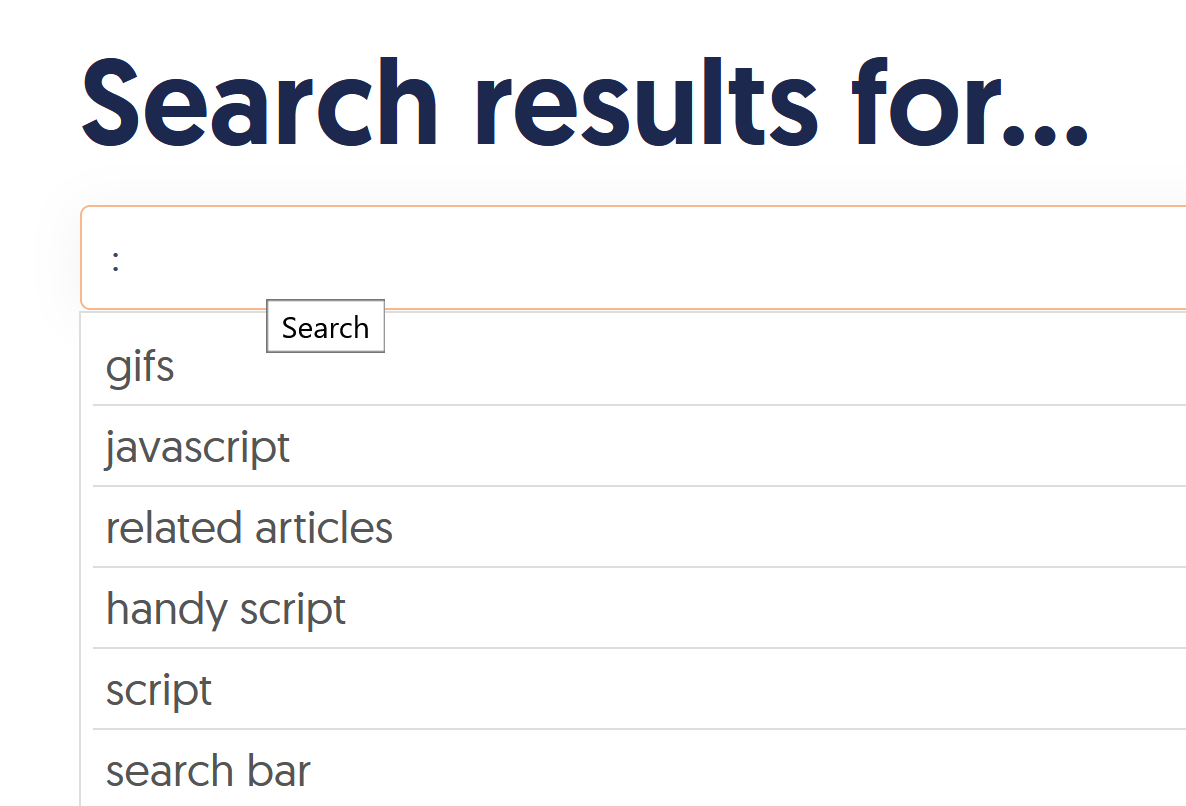When your CAPRA self-assessment knowledge base was created, all of the standards in it were set to a Needs Review publishing status.
As we've mentioned, we recommend changing the publishing status of a standard to Published once you consider it complete. This will help you keep track of which standards are complete and which still need your review.
You can see the standards that you have remaining in three ways:
- Review the article call-outs on the Articles page. Refer to the Articles page instructions.
- Use the standard Needs Review filter in the Manage page. Refer to the Needs Review filter in Manage instructions.
- Use a chapter-specific custom filter in the Manage page. Refer to the Custom filter in Manage instructions.
Let's look at each more closely:
Articles page
On the Articles page, any standard with a Needs Review status has a purple Needs Review callout next to the title.
For example, here I can see that standards 1.1 and 1.2 are complete, but I still need to finish standards 1.3 and 1.4:

Pros to this approach
This can be a great view to get a feel for how complete a certain chapter is.
Cons for this approach
This doesn't provide a count or let you see across all chapters at once.
Needs Review filter in Manage
On the Manage page, accessible from the left navigation, use the Needs Review filter to get a complete list of all standards with a Needs Review status:

Pros to this approach
This filter looks across all chapters. It will give you a complete count of remaining standards at the bottom of the page. You can also export this list to Excel using the Export Articles to CSV option, in case you want to track that information somewhere else.
Cons of this approach
This gives you a complete list of all Needs Review standards in the entire knowledge base. It can be unwieldy if you're trying to track progress on a specific chapter.
Custom filter in Manage
On the Manage page, you can also create a custom filter to pull a more specific list of articles. Refer to Create a custom Manage filter for detailed instructions on creating a custom Manage filter.
For CAPRA workflows, the most common custom filter is to use:
- Status of Needs Review
- Category set to a specific individual chapter
The custom filter screen with these settings would look like this:
 Sample custom Manage filter with a Chapter selected as a Category filter and the Needs Review status
Sample custom Manage filter with a Chapter selected as a Category filter and the Needs Review statusThis will give me a list of the standards in Chapter 1 only that are in Needs Review status:
 Sample custom Manage filter output.
Sample custom Manage filter output.Pros to this approach
This filter gives you a count and punchdown list for the standards remaining in the selected chapter. You can also export this list to Excel using the Export Articles to CSV option, in case you want to track that information somewhere else.
Cons of this approach
No real cons to this approach, though you may need to create different filters for different chapters or edit your filter to change the Category selected.
When your CAPRA self-assessment knowledge base was created, all of the standards in it were set to a Needs Review publishing status. Our standard recommended workflow for our CAPRA customers is to then use the Published status to show when a standard is complete.
However, the Needs Review status will still show these in-progress standards on your knowledge base (visible when you select the View knowledge base link in the left menu or View Article link while editing any standard).
Some of our CAPRA customers prefer to have standards show in the knowledge base only once they are complete.
If you'd prefer to adopt this workflow, we recommend changing all standards to a Draft publishing status and then Publishing them when they're complete.
You can edit all of your existing standards from Needs Review to Draft status using these steps:
- In the left navigation, go to Manage.
- In the dropdown at the top, select Needs Review from the Standard filter options.

- Once the filter loads, select the checkbox to the left of the Article Name field to select all the standards on the screen:

- You'll see an option to select all articles in filter (this will vary based on the number of standards displayed). Click on the link to select all xxx articles that match the current filter:

- The message will change to confirm you've selected all in filter. Select the Bulk Edit link between the filter dropdown and the Article Name column:

- The Bulk Edit Articles modal opens.
- In the modal, select Draft from the Publishing Status dropdown.
- Then select Update Articles.

- This will set all your Needs Review articles to have a Draft publishing status. The Bulk Edits take a little to process, so you'll see a progress bar across the top while we make the edits. A confirmation message displays once it's complete.
With these changes made, you can track the standards still needing work using the same strategies as outlined in Tracking complete/incomplete standards but using the Draft filter or status instead of Needs Review.
You can also use two other unpublished statuses and their related Manage filters to manage your workflow:
- Ready to Publish: Indicate something is ready to be reviewed.
- Rejected Draft: Indicate the standard isn't quite ready for publication yet and needs some changes.
As we mentioned in the Optional/helpful sections of The basics: editing standards, some CAPRA customers also use optional tags to help manage their self-assessment workflow.
A tag is a word or short phrase that describes the article. An article may have as many tags as you like. They can be a great way to add organization and navigation to your knowledge base.
The easiest way to think about tags is to consider them like filters for your content. These filters can be used:
- By your readers using a tag search (which begins with ":" followed by the tag name)
- As custom filters in Manage: if you're using tags for these kinds of internal filters only, you can mark tags as "hidden" so they won't show up to readers

For readers, tags will display:
- In search results, in a Tags section between the Last Updated and the article blurb:

- In the search autocomplete after they've begun a search phrase with a colon (":"):

- If you've added the article-tags template to Customize > Style (HTML & CSS) > Custom HTML > Article, tags display in the article wherever you've added that template. (These are not included by default in the article layout, though.)
Tags + CAPRA workflows
For CAPRA customers, the most common ways to use tags are:
- If you're using shared author accounts, create a tag for each collaborator's name. Add that name tag to the standards that you need that person to work on.
- Create tags for documents, policies, or other real-world actions that haven't been completed yet, so you can easily pull a list of standards that need editing once that real-world task is done. (Such as: 2026 Budget, 2026 Audit Results, August Board Meeting, etc.)
Once tags have been added to articles, create custom Manage filters for those tags, so you can quickly generate lists of the articles tagged in certain ways.
Refer to Tags for more information on working with tags. Refer to Creating a custom Manage filter for steps on how to create a Manage filter to look for specific tags.







